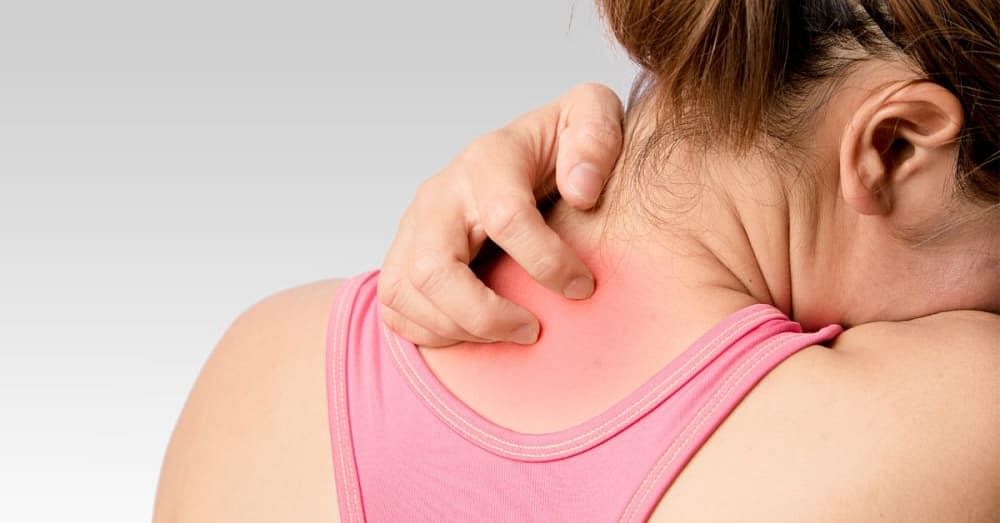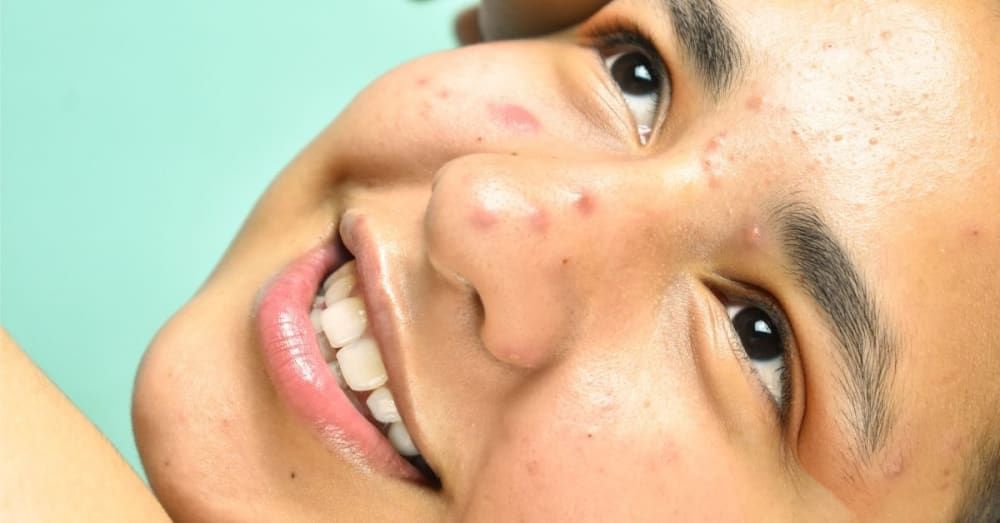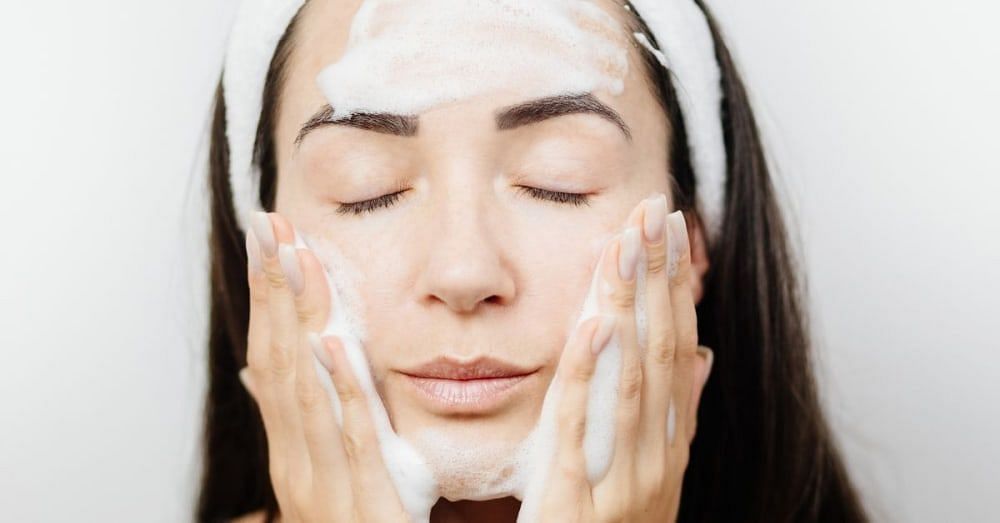The skin is the body's largest organ which protects it from several types of infections. However, it can sometimes get infected with various microbes like bacteria, viruses, and fungi. Among these, viral infections are common and easily spread from person to person.
Continue reading to learn about viral skin infections, types, diagnoses, prevention, and treatment.
What are viruses?
You might have often heard your doctor say, "It's just the virus!". This virus is a tiny microorganism, invisible to the naked eye. Yet, we are surrounded by these microscopic germs that can cause harmless infections like the common cold to life-threatening diseases like AIDS.
What are viral skin infections?
Viral skin infections are conditions that affect the skin. There are several viral skin infections, some of which are immune responses to a virus, and some are skin infections.
Usually, skin gets infected when viruses enter the body through a skin wound, crack, or cut. However, sometimes when skin gets rubbed on the skin, particularly in moist areas, other skin infections may develop. Additionally, infections can occur if a part of the body has inadequate blood flow or the immune system is compromised due to another illness or medical procedure. The severity of viral infections ranges from entirely harmless to serious and rarely lethal.
Which infections are viral?
1) Pityriasis rosea
This self-limiting rash affects children and adults between the ages of 10 -35, commonly in the spring and autumn. Pityriasis rosea causes oval-shaped, pale red patches all over the body, face, and head. Usually, it starts with larger oval patches on the tummy or chest, followed by dozens or even hundreds of smaller oval patches. Despite their awful appearances, they can hardly be felt.
2) Measles
Measles, or German measles, is a highly contagious viral disease. People with this infection have the virus in their nose and throat. The virus can spread through direct physical contact, coughing, and sneezing. Like pityriasis rashes, the measles rash is hardly painful but has an awful appearance. The infection makes you feel generally unwell.
3) Hand, foot, and mouth disease (HFMD)
The Coxsackie A16 virus is the causative virus of HFMD. The disease typically begins with feeling unwell for a day or two, followed by little spots inside the mouth. These quickly develop into little mouth ulcers.
In addition, tiny bumps on the palms and soles are symptoms of HFMD. These rashes aren't painful or itchy, but they can be uncomfortable.
4) Chickenpox
Chickenpox is a viral infection caused by the virus varicella-zoster. Chickenpox commonly affects kids below the age of 10 years. Chickenpox symptoms include small, dispersed spots all over the body, especially on the chest and abdomen. These rashes are itchy and a bit uncomfortable.
5) Monkeypox
Monkeypox is a rare viral infection that's caused by the mpox virus. However, it can occasionally be mistaken for chickenpox due to its rash, especially in its early stages. Monkeypox blisters initially contain clear liquid but develop murky yellow-white fluids over time.
6) Molluscum contagiosum
This is characterised by tiny, pearly-white, or faintly pink warty pimples (Mollusca) on the skin. Molluscum contagiosum is caused by a virus that can spread through contact with infected skin or contaminated towels, blankets, soft toys, etc. Any age group can be affected by molluscum contagiosum; however, it's more common in children of 1-4 years. It can also affect adults, especially when their immune system is compromised.
7) Herpes simplex
Oral herpes and genital herpes are viral skin diseases brought on by the herpes simplex virus, or HSV. A skin rash appears from herpes simplex virus (HSV-1) infection. Burning and tingling are the first symptoms of HSV. One or more painful blisters may also develop. The scabs take many days to form, and the blisters may weep.
8) Orf
This is a viral skin disease transmitted by handling sick sheep or goats. The rash typically appears on the face, forearms, fingers, and hands. It usually goes away on its own and takes around six weeks to heal.
Also Read: How to Cure Fungal Infection on Skin Naturally: 10 Proven Remedies
Chickenpox symptoms
The rash and other chickenpox symptoms appear after 10 to 21 days of exposure to the varicella-zoster virus. Usually, the chickenpox rash has three stages and lasts 5 to 10 days:
- Papules: These are raised bumps that appear over a few days.
- Vesicles: Vesicles are tiny fluid-filled blisters that appear a day before breaking and leaking.
- Scabs and crusts: These cover broken blisters.
New bumpy rashes keep appearing for several days. So one might simultaneously see bumps, blisters, and scabs.
Other chickenpox symptoms that appear one to two days before the rash are:
- Fever
- Decreased appetite
- Headache
- Fatigue
- A general feeling of being sick
Chickenpox causes
The varicella-zoster virus is the causative microbe of chickenpox. Anyone who directly comes in contact with the rash can get infected. It can also spread when the person who has chickenpox coughs or sneezes.
Those who never had chickenpox or the vaccine are at higher risk of contracting the virus.
Also Read: Unlocking the Secrets: A Step-by-Step Guide on How to Get Clear Skin
Chickenpox treatment
Usually, chickenpox treatment is not required. However, in some kids, antihistamine medication is used to reduce itching.
In people at high risk of complications, doctors give chickenpox treatment to reduce the duration of the disease. For instance:
- Acyclovir (Zovirax, Sitavig), an antiviral drug, decreases symptoms of chickenpox.
- Antiviral medications like valacyclovir (Valtrex) and famciclovir lessen the severity of the sickness.
Measles
Measles is a severe respiratory viral disease. The main culprit behind measles is a virus from the paramyxovirus family. It spreads through direct contact and the air. This virus infects the respiratory tract and subsequently spreads throughout the body.
Measles symptoms
Usually, measles symptoms resemble a cold and progress to a rash a few days later. The characteristic measles symptoms include:
- A prodrome of fever spiking up to 105°F
- The three "Cs" include cough, coryza (runny nose), and conjunctivitis (inflammation in the eyes)
- A specific rash called Koplik spots. These are tiny, red, white, or grey dots in the mouth.
The maculopapular rash usually appears 14 days after exposure. The rash first appears on the face and in the area behind the ears. Then it spreads from the head to the chest, abdomen, and limbs. Sometimes the raised regions of these rashes merge to form blotchy patches. The person remains contagious four days before and after the rashes appear.
What is Molluscum contagiosum?
This is a viral skin infection caused by a virus named Molluscum contagiosum. This virus produces painless, raised lumps or lesions on the upper skin layers. These lesions spread through direct skin-to-skin contact with an infected person or touching an item contaminated with the virus. However, the rashes rarely leave scars and resolve on their own.
Molluscum contagiosum on the face
The lesions of molluscum contagiosum on the face vary in size from a pinhead to the size of a pencil eraser. These lesions itch and then become red, sore, and painful. Molluscum contagiosum on the face appears after 2-6 weeks after the infection. If the patient's immune system is good, it goes away on its own in 2-3 months without treatment.
Also Read: Amazing Skin Tightening Home Remedies To Prevent Skin from Sagging
Molluscum contagiosum symptoms
The molluscum contagiosum symptoms are the lesions that can be seen on the face, neck, arms, legs, belly, and genital region. Rarely these lesions are found on the soles or the palms. These lesions are
- Small, elevated, typically white, pink, or flesh-coloured, with a dimple or pit in the middle.
- Have a pearly appearance.
- The papule ranges from a pinhead to a pencil rubber (2 to 5 millimetres diameter).
- These lesions can become bloated, red, itchy, or sore.
- Papules can be stiff initially but may eventually soften.
- A clear to white fluid may leak from the papule.
Usually, the molluscum contagiosum symptoms clear off within a few weeks without treatment. If the lesions persist, various molluscum contagiosum treatment options like cryotherapy, curettage, scraping, and laser therapy can be helpful.
Warts
Warts are growths that appear when a virus called Human papillomavirus (HPV) enters the upper layer of the skin. Warts are frequently skin-coloured, rough, and flat. Sometimes, they can be dark, brown, or grey-black. In addition, wart viruses are contagious and can spread by coming in contact with the wart.
Warts cause
The leading cause of warts is the Human Papillomavirus (HPV), which causes excess keratin growth (a hard protein) on your skin layers. However, because everyone's immune system responds to the virus differently, not everyone exposed to HPV gets a wart.
Besides, the infection spreads much faster if you cut yourself or damage your skin.
The following are some ways this virus can spread to other body parts:
- Shaving the face or legs, biting fingernails,
- A damp or injured skin, like a cut
- A person with suppressed or impaired immune system
- Warts are likely to appear on those handling raw meat, such as butchers.
Can warts be prevented?
Warts cannot be prevented, but you can always lower the risk of spreading by.
- Avoiding picking, touching, or scratching your or anyone else's warts
- Washing your hands after wart removal
- Keeping your foot warts dry
- Wearing waterproof sandals or flip-flops in public restrooms, locker rooms, and areas near public pools.
What are the symptoms of a skin infection?
Different microorganisms cause skin infections, and the symptoms can range from mild to serious. Bacteria, viruses, fungi, or parasites can cause skin infections. The symptoms differ depending on the kind of skin infection. The symptoms of skin infections include
- A rash and skin redness
- Itching
- Soreness
- Tenderness
- Pus-filled blisters
Severe skin infection symptoms include:
- Black or discolouration of the skin
- Painful pus or blood
- Necrotic skin appearance
Also read: 8 Amazing Honey Benefits for Skin We Bet You Didn’t Know About
What do viral skin infections feel like?
A viral skin infection can feel different according to the causative microbe and severity. It can itch, sting, burn, ache, hurt, discomfort, or pain. In addition, the appearance of viral skin rashes differs from welts, red, brown, to purple blotches. For instance,
- The pityriasis rosea has oval pale red patches all over the body.
- Hand, foot, and mouth disease has small bumps on the palms, soles, and mouth that are painful or itchy.
- Chickenpox rashes are small, spread all over the body that are sore and itchy.
- Monkeypox rashes are blisters filled with clear or cloudy yellow-white liquid.
- Cold sores have itchy, tingly rashes over the edge of your lip.
- Molluscum contagiosum rashes are clustered together on limbs.
How is a skin infection diagnosed?
A thorough medical examination is the best way to diagnose any skin infection. In addition, doctors can often detect the type of skin infection based on the location and appearance. For instance, ringworm has a characteristic circular, scaly rash.
Your doctor will ask whether you have lumps, rashes, or lesions and carefully examine them before the final diagnosis. If your doctor cannot diagnose viral skin infections, he may recommend you to a dermatologist specialising in treating skin conditions. In some circumstances, a sample of skin cells can assist your doctor in identifying the type of infection. In addition, a blood test may be requested if you have a rash resembling mumps or measles.
How to treat a viral skin infection?
Viral skin infections do not require any treatment. The rashes typically go away as the virus clears and your body heals. However, treating the underlying virus may lessen symptoms like pain, itchiness, and discomfort with some antiviral medications.
For instance
- Applying a topical lotion to relieve itching, such as calamine lotion.
- A doctor might recommend paracetamol to treat pain or antihistamines to lower itching.
FAQ
What are viral skin infections?
Viral skin infections are infectious conditions caused by viruses. Some viral infections are due to viruses in your body, while some are due to your skin contacting them. These can be mild to severe, rarely life-threatening. Viral skin infections can look like bumps, red, brown, or purple blotches, or tiny spots. Although viral skin infections can affect anyone, they are more prevalent in infants and young children.
What are the common viral skin infections?
Some common viral skin infections are:
- Measles
- Chickenpox
- Erythema infectiosum
- Roseola
- Pityriasis rosea
- Hand, foot, and mouth disease
- Laterothoracic exanthem
- Smallpox
- Monkeypox
What are the symptoms of viral skin infections?
Viral skin diseases have skin rashes that vary depending upon their causative agents. For instance, some are macular, papular, red rashes, pus-filled blisters, cluster lesions, pale, pearl-like vesicles, or dry papules. In addition to skin symptoms, viral skin diseases present with
- Fever
- Chills
- Sore throat
- Nasal congestion
- Sneezing
- Runny nose
- Cough
- Body aches
- Fatigue
Usually, these symptoms remain for three days to a week and gradually improve.
How are viral skin infections diagnosed?
Skin lesions are characteristic of most viral skin diseases and are diagnosed with their unique appearance. The doctor will analyse your symptoms and examine the rashes before giving the final diagnosis. If the doctor needs to differentiate between similar-appearing lesions, he may also request some blood tests for diagnosis.
How can I prevent viral skin infections?
Here are some tips that can help you prevent viral skin infections
- Frequently wash your hands
- Wash and clean cuts, wounds, scrapes, or insect bites immediately
- Avoid sharing towels, blades, bathing soap, apparel, or toys.
- Cut your fingernails regularly
- Avoid direct skin contact with a person with the viral skin infection
Are viral skin infections contagious?
Most viral skin infections are contagious. Some of them spread via
- Cough, nasal discharge, or air droplet like common flu
- Direct skin-to-skin contact
- Contact with any infected item, like a surface, towel, razor, brush, etc.
Can viral skin infections recur?
Except for herpes simplex, viral skin diseases that have once been infected usually do not recur. This is because, as with the first viral infection, your body produces proteins called antibodies that fight infection and boost your immune system. This response prevents reinfection from the same virus. However, in conditions where your immune system is compromised, like in HIV, viral infections can reoccur.












